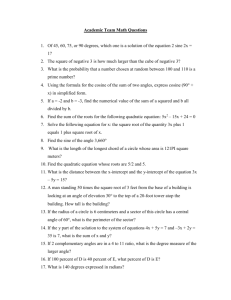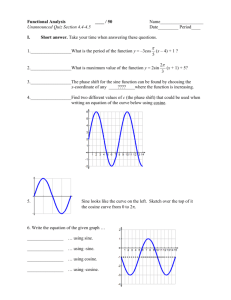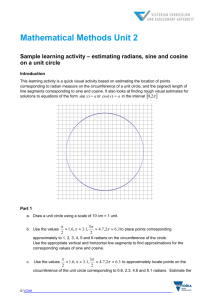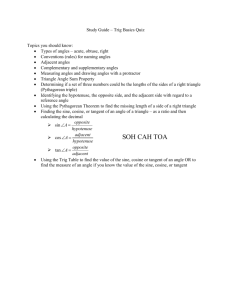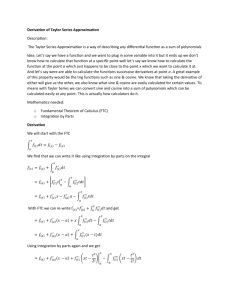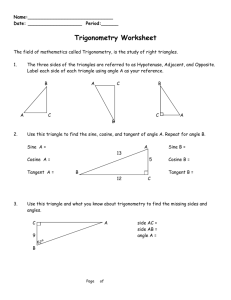The Unit Circle
advertisement
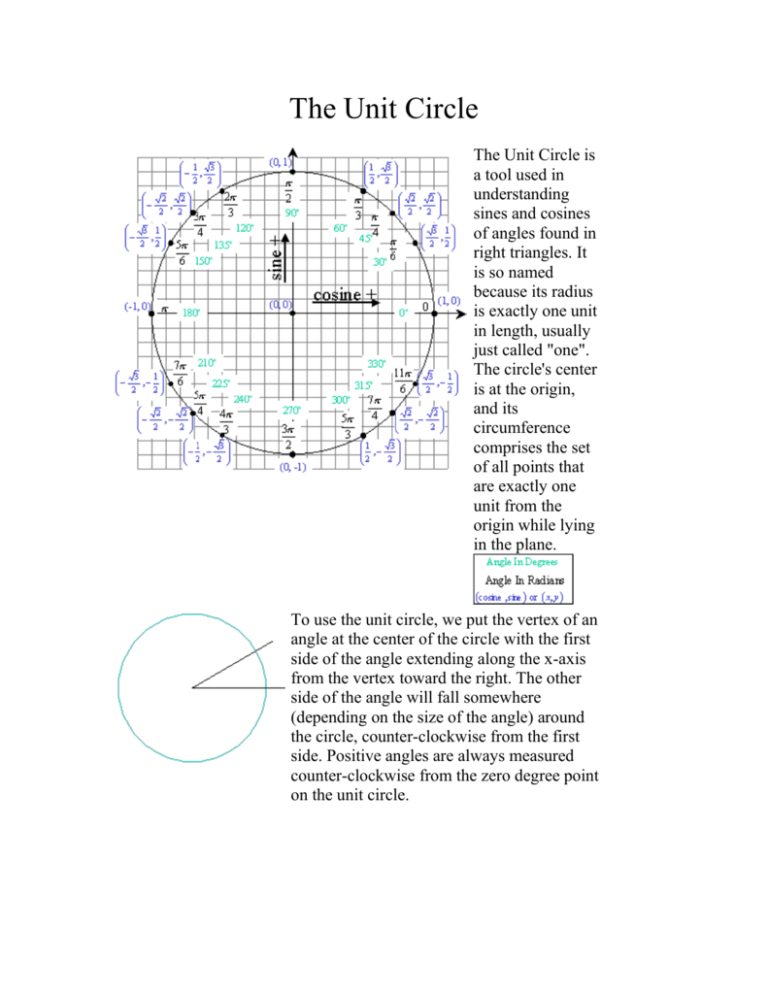
The Unit Circle The Unit Circle is a tool used in understanding sines and cosines of angles found in right triangles. It is so named because its radius is exactly one unit in length, usually just called "one". The circle's center is at the origin, and its circumference comprises the set of all points that are exactly one unit from the origin while lying in the plane. To use the unit circle, we put the vertex of an angle at the center of the circle with the first side of the angle extending along the x-axis from the vertex toward the right. The other side of the angle will fall somewhere (depending on the size of the angle) around the circle, counter-clockwise from the first side. Positive angles are always measured counter-clockwise from the zero degree point on the unit circle. Next, we draw a vertical line from the point where the second side of the angle meets the circle to the x-axis (the vertical line must form a right angle with the xaxis). The circle's radius being one unit in length is important now, because the sine and cosine are defined as the opposite or adjacent (respectively) over the hypotenuse. The hypotenuse equaling one simplifies the calculations greatly! On the unit circle, we need only measure the opposite or adjacent side of the triangle for an accurate measurement of the sine or cosine. In PreCalculus class, the angles on the unit circle really have to be memorized. But we might look at the "square root of three divided by two" and wonder what this really means. If the values were a little more meaningful, they might be more memorable! Cosine and sine values in this diagram have been converted into some perhaps more familiar forms. A little algebra reveals that the 30o angle has a cosine of and a sine of . Perhaps this way of looking at the sine and cosine values will be helpful in your memorization. But as long as we're looking at it this way, please consider the Pythagorean theorem. The cosine of 30o is (the width of the blue box) and the sine is (the height of the yellow box) and these are two sides of a right triangle! The Pythagorean theorem says that if we add the squares of these two sides together, we get the square of the hypotenuse. gives us 3/4 (the area of the blue box), and is 1/4 (the area of the yellow box). Well, of course 3/4 plus 1/4 is 1, but here's the important part: sine squared plus cosine squared of a given angle always equals 1. Here's how sine and sine squared, and cosine and cosine squared look for various angles. Notice the hypotenuse (the radius) is always 1, so the hypotenuse squared never changes size. How do the sine and cosine functions' graphs relate to the angles on a unit circle? Click here! You need to memorize the unit circle, but if those other ways don't seem to do it for you, try this: Remember that each of these fractions is "over two", and each numerator is under a radical; Starting at the 0o point and looking at sine, the numbers under the radicals are: 0, 1, 2, 3, 4 as you work your way around counterclockwise. Once you get to the 90o point, go back down to 0o using the same pattern, only now for cosine. Watch out for the negative signs in the other quadrants, but the numbers are all the same. Remember: Denominator is 2, Numerator is under a radical (yes, you can skip the radical with 0 and 1 if you wish). Okay, that's fine for sine and cosine, but what about tangent? Tangent is the quotient of the sine over the cosine, and sine and cosine are between positive and negative 1. Division problems like this are sometimes difficult. Well, back to our Unit Circle! With your angle in standard position, it's easy to see the tangent if you extend the hypotenuse to the right until it touches the x = +1 line. The tangent is the same as the y value where the hypotenuse intersects x = +1. Note: even if your angle has a negative cosine, you still have to extend to the right.
